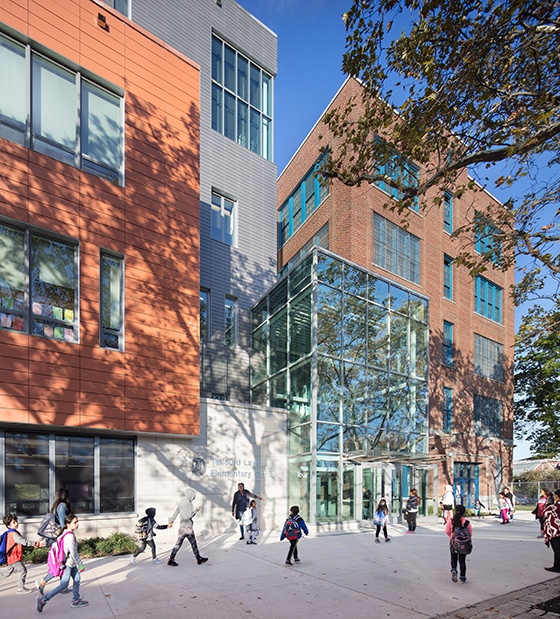Urban Design Forum Competition: Revitalizing the Urban Extents
“Building an equitable economy in New York City requires a groundbreaking approach to urban design.” – Urban Design Forum
As a civic-minded, mission driven firm, Dattner Architects responds to the Urban Design Forum: Call for Ideas. This year, the theme was Work Force. Urban Design Forum invited proposers to explore creative design, policy, or financing, and were prompted to bring bold ideas with real life applicability. They drove the conversation with a few key questions: How can we use creative zoning, investment in the public realm, and new infrastructure to enhance economic outcomes for all; How will automation impact the urban workforce and long-standing commercial districts; and how can emerging working neighborhoods be connected through new mobility networks?
Excited by Urban Design Forum’s leading questions, members from the firm’s three studios began with round table discussion, and evolved into deep research and design collaboration to submit a proposal called Revitalizing the Urban Extent.

Revitalizing the Urban Extents
A stent is a device deployed to heal the circulatory system and prevent a more intensive surgical undertaking.
NYC was once a hub of self-sustaining enclaves, each with an identity playing part to a whole. As the city evolves, those individual neighborhoods are losing some of their character, growing more dependent on Manhattan’s Central Business Districts (CBD) and the transit networks that serve them. We propose deconcentrating our CBDs through strategies that catalyze and encourage development of the urban extents—underserved neighborhoods at the City’s peripheries and in-between spaces—deploying efficient, inexpensive infrastructure by using existing right-of-ways, automated technologies, and creative methodologies to infill current transit deserts. Recent precedents indicate that constructing new subway infrastructure in New York City costs upwards of $2 billion per mile. The speeds and capacities that our rail systems offer are not suitable for every situation, and often resources are not allocated to areas of lower density. In these areas, neighborhoods rely on alternate large capacity modes of transit including the public bus and private shuttle. However, riders can expect longer wait times as schedules slow to match the demand. Even with reduced frequencies, buses continue to circle their route far below capacity.
The City has committed to preserving and supporting job growth by revitalizing existing manufacturing districts. To further benefit the workforce and these underserved neighborhoods, we propose connection through the immediate deployment of small-scale, lower cost means of transit at the urban extents comprising:
- A comprehensive waterway network resulting in 14 new ferry landings to provide access to all waterfronts.
- High speed automated vehicle thruways using existing right of ways which will not contend with a more fluid pedestrian and vehicle movement.
- Aerial ropeways as an urban ‘stent’ to immediately reconnect the urban extents to the existing transit network. The proposed system will include 220 new stops over approximately 165 miles of ropeway, totaling at an estimated $2 billion.
By implementing alternative systems, we are able to move methods of public transportation off the roads via waterways or ropeways, creating a more activated and engaging streetscape. These strategies are particularly vital to waterfront neighborhoods, where resiliency and environmental responsiveness are integral to future development, emphasizing existing infrastructure to solidify the waterfront as a crucial foundation to New York’s landscape and culture. Simpler construction of transportation over shorter distances, coupled with app-based network technologies providing on-demand service, alleviates unnecessary, empty transit circulation. Reduced up-front costs and minimal operational responsibility create opportunity for Public/Private Partnership as a funding strategy, benefiting both the Municipality and private investors. With a more robust and resilient transit network, we envision neighborhoods thriving with diversified job opportunities, local amenities, and scales of housing—supporting a life and identity independent of the CBD.
